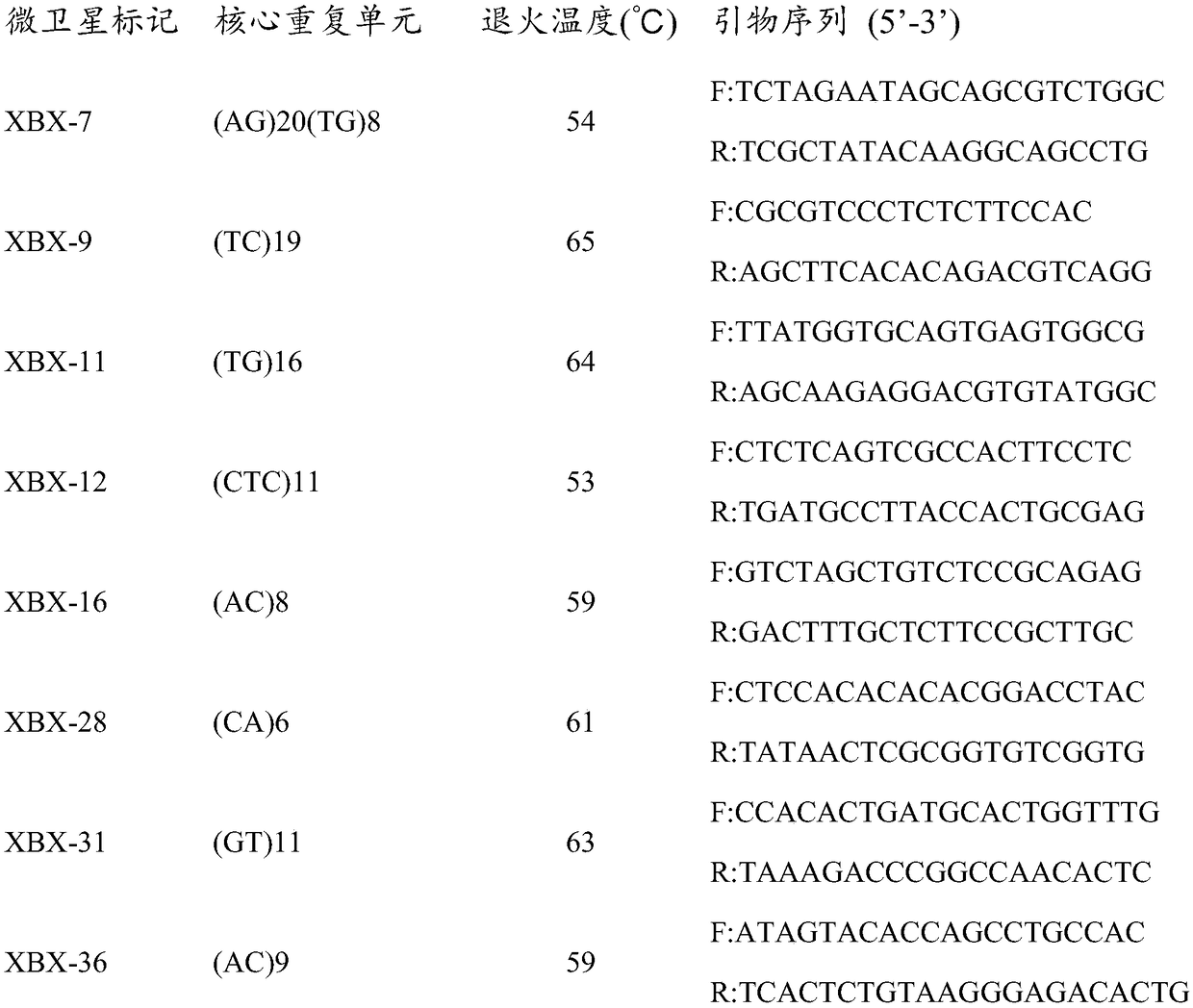Charybdis feriatus whole-genome microsatellite marker, screening method and application
A technology of microsatellite marker and whole genome, applied in the field of microsatellite molecular marker of C. rustii, can solve the problems of high repetition rate, high randomness of picking clones, low efficiency, etc., and achieve the effects of improving efficiency, simple operation and low economic investment.
- Summary
- Abstract
- Description
- Claims
- Application Information
AI Technical Summary
Problems solved by technology
Method used
Image
Examples
Embodiment 1
[0025] 1. Extraction of Genomic DNA
[0026] Collect 40 adult crabs of rust-spotted crabs, take about 10 g of muscle tissue and preserve it with 95% alcohol. Take about 100mg of muscle tissue, put it into a 1.5mL centrifuge tube filled with 300μL tissue lysate, and homogenate; add 10μL RNase (20mg / mL) to the centrifuge tube in turn, mix well, and incubate at room temperature for 2min; add 5μl proteinase K (20mg / mL), fully mixed, digested in a 55°C water bath until clarified, which can be shaken and mixed several times to accelerate its dissolution; followed by continuous extraction twice with Tris-saturated phenol and chloroform; absorb the supernatant Add about 300-350μL to a new centrifuge tube, add 1ml of pre-cooled absolute ethanol to precipitate DNA, centrifuge at 12000rpm to collect the precipitate, and wash it again with pre-cooled 70% ethanol; finally, dry the DNA (precipitation) at room temperature and dissolve in 40 μL sterile double-distilled water, and store at -2...
PUM
 Login to View More
Login to View More Abstract
Description
Claims
Application Information
 Login to View More
Login to View More - R&D Engineer
- R&D Manager
- IP Professional
- Industry Leading Data Capabilities
- Powerful AI technology
- Patent DNA Extraction
Browse by: Latest US Patents, China's latest patents, Technical Efficacy Thesaurus, Application Domain, Technology Topic, Popular Technical Reports.
© 2024 PatSnap. All rights reserved.Legal|Privacy policy|Modern Slavery Act Transparency Statement|Sitemap|About US| Contact US: help@patsnap.com










